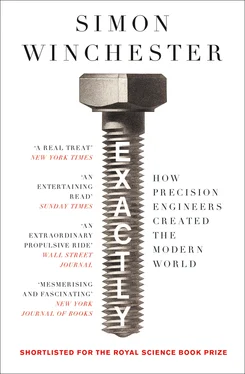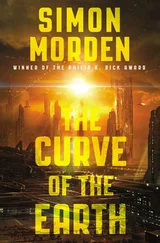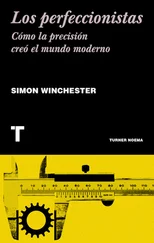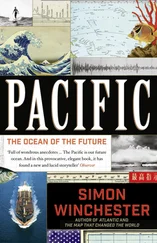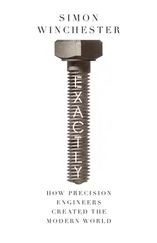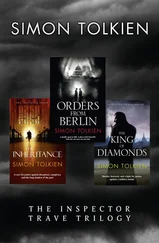The very young Maudslay, “a tall, comely young fellow” by the time Bramah hired him, cut his teeth in the Woolwich Royal Arsenal in East London. Working first as a twelve-year-old powder monkey—small boys, fleet of foot, were used by the Royal Navy to bring gunpowder up from the ships’ magazines to the gun deck—he was then moved to the carpenter’s shop, only to pronounce himself bored by the inaccuracy of wood. It was starkly clear to all who employed him that the youngster much preferred metal. They looked away when he smuggled himself into the dockyard smithy, and they said nothing when he developed a sideline in making a range of useful and very handsome trivets out of cast-off iron bolts.
IN 1789, JOSEPH Bramah cut an anxious figure. The political situation across the Channel was causing an influx of terrified French refugees, most of them bound for London, where the more nervously xenophobic residents of England’s capital suddenly started to demand ever more security for their homes and businesses. Bramah, with his patent-protected monopoly, was caught in a bind: he alone could make his locks, but neither he nor any engineer he could find had the ability to make them in sufficient numbers at a low enough price. Most men who called themselves engineers may have been adept at the cruder crafts—at thumping ingots of heat-softened iron with heavy hammers and then working to shape the crudely formed results with anvils, chisels, and, most especially, files—but few had a great feel for delicacy, for the construction of (and the word had only recently been adopted) mechanisms .
Change was coming, though. Workers at the smithies of eighteenth-century London were a close-knit group, and word eventually did reach Bramah that a particular youngster at Woolwich was startlingly unlike his older peers and, rather than bashing hunks of iron, was apparently crafting metal pieces of an unusual, fastidious daintiness. Bramah interviewed the teenage Maudslay. Though taking to him immediately, the former was only too well aware that the custom was for any would-be entrant to the trade to serve a seven-year apprenticeship. However, commercial need trumped custom: with would-be patrons beating down his door back on Piccadilly, Bramah had no time to spare for the niceties, decided to take a chance, and hired the youngster on the spot. His decision was to change history.
Henry Maudslay turned out to be a transformative figure. First of all, he solved Bramah’s supply problems in an inkling—but not by the conventional means of hiring workers who would make the locks one by one through the means of their own craftsmanship. Instead, and just like John Wilkinson two hundred miles west and thirteen years earlier, Maudslay created a machine to make them. He made a machine tool: in other words, a machine to make a machine (or, in this case, a mechanism). He built a whole family of machine tools, in fact, that would each make, or help to make, the various parts of the fantastically complicated locks Joseph Bramah had designed. They would make the parts, they would make them fast and well and cheaply, and they would make them without the errors that handcrafting and the use of hand tools inevitably bring in their train. The machines that Maudslay made would, in other words, make the necessary parts with precision.
Three of his lock-making devices can be seen today in the Science Museum in London. One is a saw that cut the slots in the barrels; another—perhaps less a machine tool than a means of ensuring that production went along at high speed, with every part made exactly the same—is a quick-grip, quick-release vise, a fixture that would hold the bolt steady while it was milled by a series of cutters mounted on a lathe; and the third is a particularly clever device, powered by a foot-operated treadle, that would wind the lock’s internal springs and hold them under tension as they were positioned and secured in place until the outer cover, a well-shined brass plate with the flamboyant signatures of the Bramah Lock Company of 124 Piccadilly, London, inscribed on its face, was bolted on to finish the job.
A fourth and, some would argue, most supremely important machine tool component also started to make its widespread appearance around this time. It would shortly become an integral part of the lathe, a turning device that, much like a potter’s wheel, has been a mechanical aid to the betterment of human life since its invention in pharaonic Egypt. Lathes evolved very slowly indeed over the centuries. Perhaps the biggest improvement came in the sixteenth century, with the concept of the leadscrew . This was a long and (most often, in early times) wooden screw that was mounted under the main frame of the lathe and could be turned by hand to advance the movable end of the lathe toward or away from the fixed end. It could do so with a degree of precision; one turn of the handle might advance the movable part of the lathe by an inch, say, depending on the pitch of the leadscrew. It gave wood turners working on a lathe a much greater degree of control, and allowed them to produce things (chair legs, chess pieces, handles) of great decorative beauty, symmetric loveliness, and baroque complexity.
Henry Maudslay then improved the lathe itself by many orders of magnitude—first by making it of iron, forging its structure stoutly and heavily, and at a stroke allowing it not merely to machine wooden items, but also to create symmetry out of shapeless billets of hard metal, which the flimsy lathes of old were incapable of doing. This alone might have been sufficient for us to remember the man, but then Maudslay employed one further component on his working lathes, a component whose origins are debated still, however, with the tenor of the debate pointing to an endless argument that complicates the historiography of precision and precision engineering.
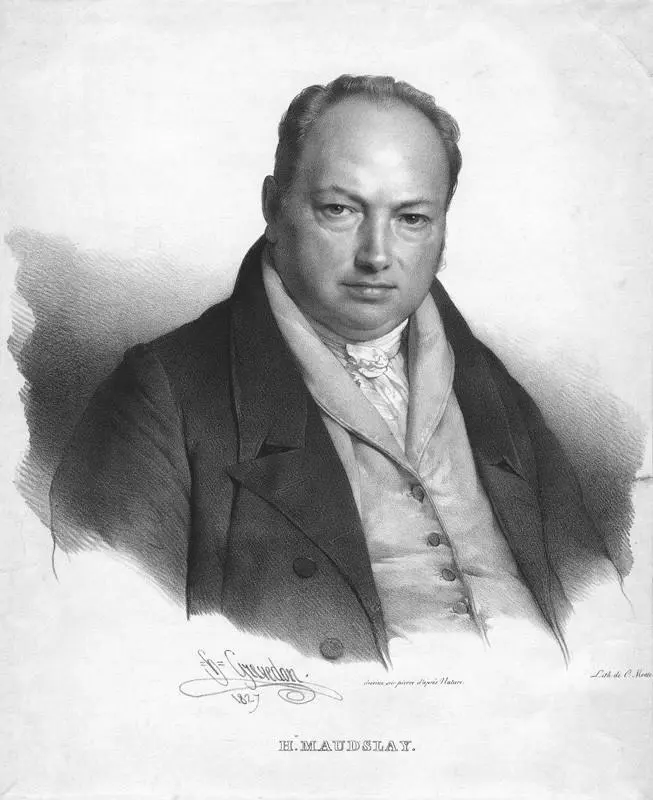
Henry Maudslay, once a “tall, comely fellow,” machined the innards of Bramah’s locks and went on to become the founding father of precision toolmaking, mass production, and the key engineering concept of achieving perfect flatness.
Specifically, the device in question mounted on Maudslay’s lathes is known as a slide rest, a part that is massive, strongly made, and securely held but movable by way of screws, and is intended to hold any and all of the cutting tools. It is filled with gears that allow for the adjustment of the tool or tools to tiny fractions of an inch, to permit the exact machining of the parts to be cut. The slide rest is necessarily placed between the lathe’s headstock (which incorporates the motor and the mandrel that spins the workpiece around) and the tailstock (which keeps the other end of the workpiece secure). The leadscrew—Maudslay’s was made of metal, not wood, and with threads much closer together and with a more delicate pitch than was possible for a wooden version—advances the workpiece. The tools held on the slide rest can then be moved across the path of travel dictated by the leadscrew, thereby allowing the tools to make holes in the workpiece, or to chamfer it or (in due course, once milling had been invented, a process related in the next chapter) mill it or otherwise shape it to the degree that the lathe operator demands. So the headstock holds the spinning workpiece securely, and the slide rest that holds the tools that cut or chamfer or make holes in it moves longitudinally, pushed or pulled by the leadscrew, or transversely or in any other directions, along its path of travel.
Metal pieces can be machined into a range of shapes and sizes and configurations, and provided that the settings of the leadscrew and the slide rest are the same for every procedure, and the lathe operator can record these positions and make certain they are the same, time after time, then every machined piece will be the same—will look the same, measure the same, weigh the same (if of the same density of metal) as every other. The pieces are all replicable. They are, crucially, interchangeable. If the machined pieces are to be the parts of a further machine—if they are gearwheels, say, or triggers, or handgrips, or barrels—then they will be interchangeable parts , the ultimate cornerstone components of modern manufacturing.
Читать дальше
